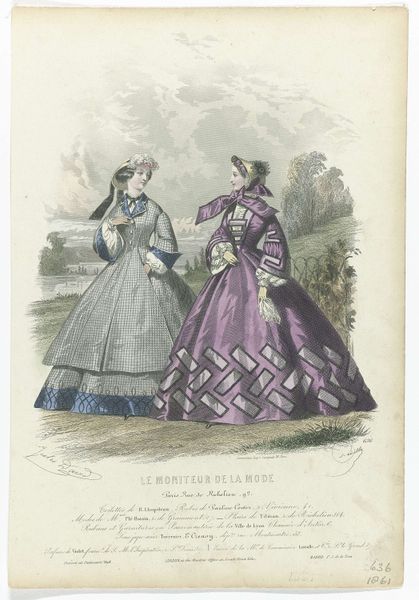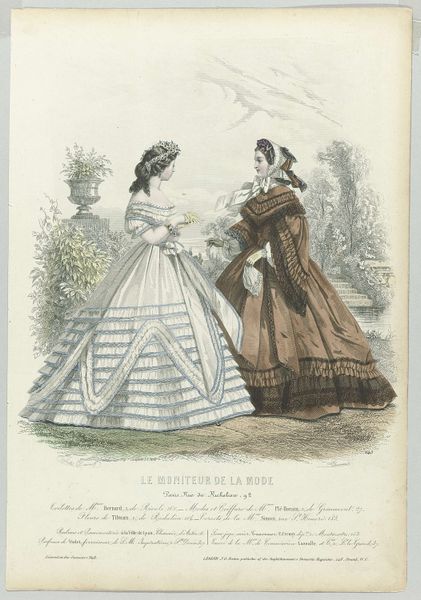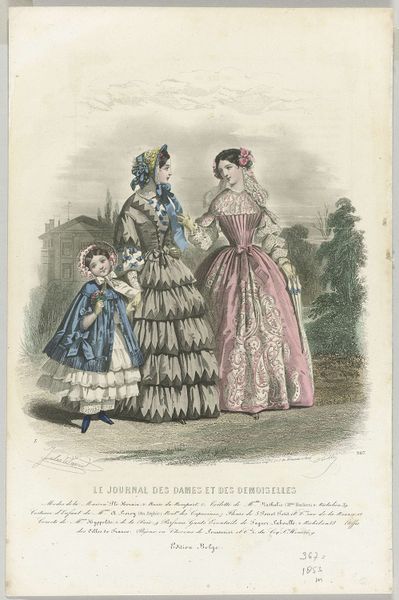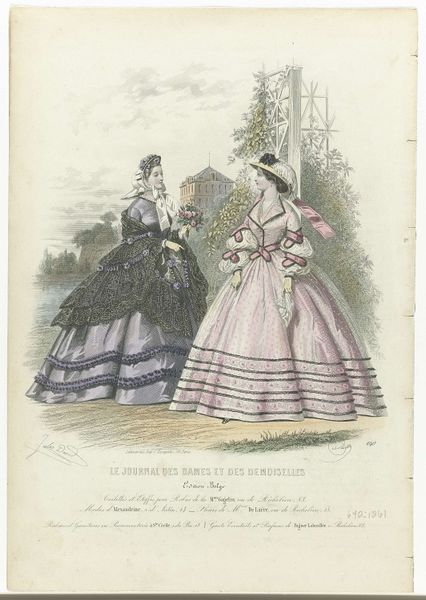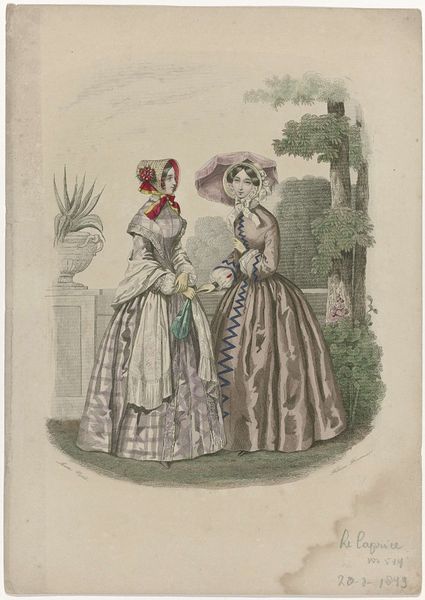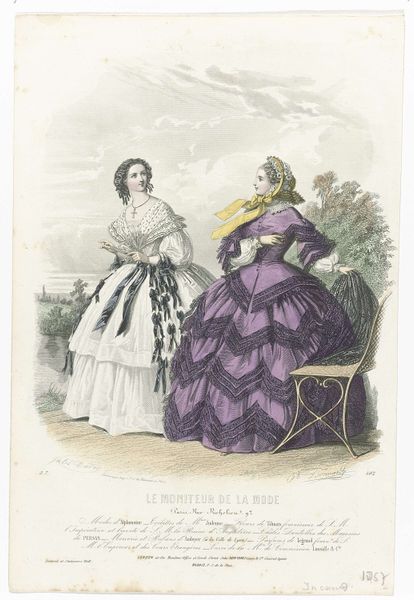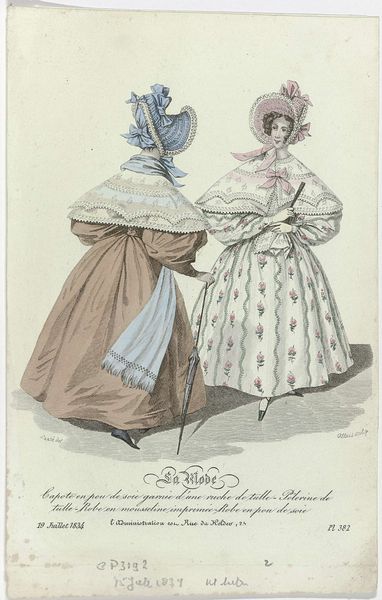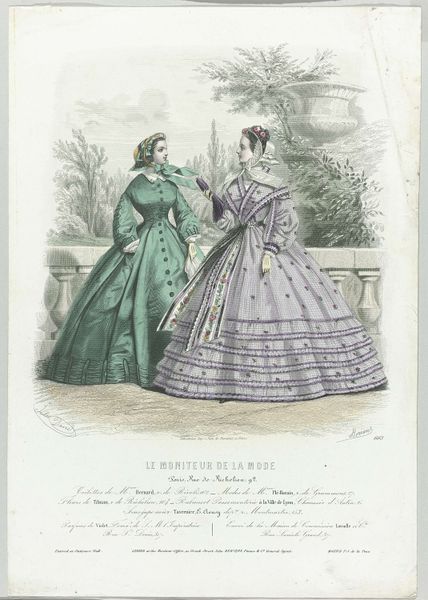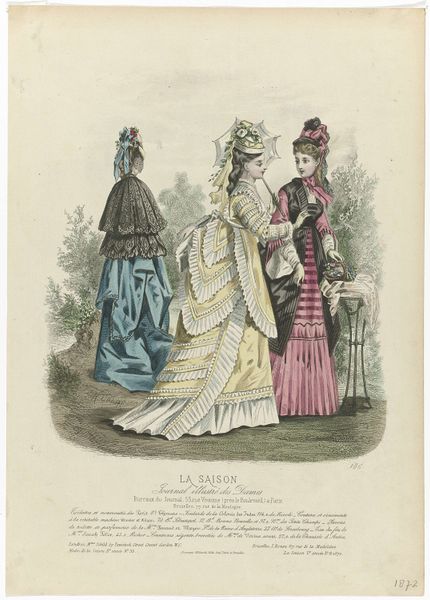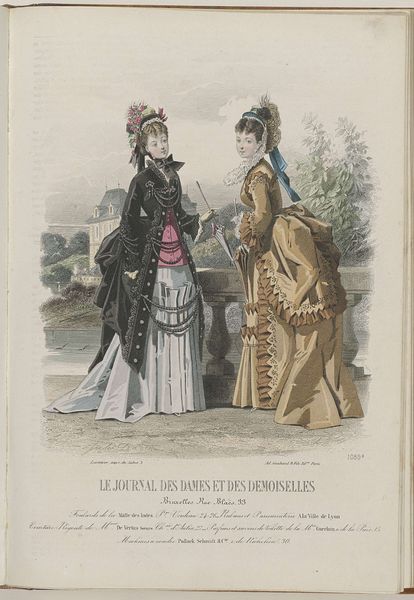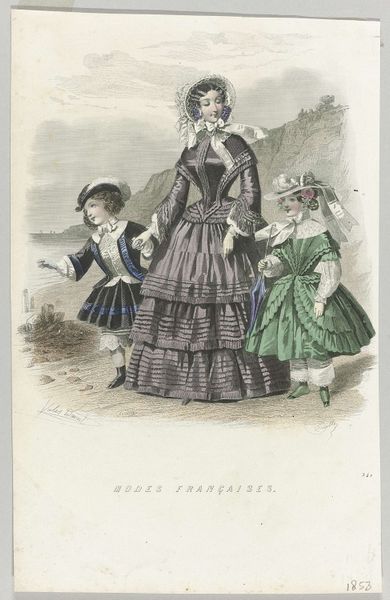
Le Journal des Dames et des Demoiselles, Edition Belge, 1870, No. 917b : Etoffes (...) 1870
0:00
0:00
Dimensions: height 300 mm, width 210 mm
Copyright: Rijks Museum: Open Domain
Curator: This is an intriguing piece, isn't it? The artwork is entitled *Le Journal des Dames et des Demoiselles, Edition Belge, 1870, No. 917b : Etoffes (...) * created in 1870. It seems to be a print. What catches your eye first? Editor: The textures, definitely the textures. All those frills, puffs, and layers—it’s an explosion of materiality! Look at how the fabric bunches and gathers, and all that trim... it screams process, production, consumption. It has to involve labor, so much of it. Curator: Absolutely. And the magazine itself, Le Journal des Dames, catered to a specific, elite consumer. Consider its role: shaping tastes, dictating trends, essentially fueling a whole industry with these idealized images. Editor: The image really flaunts excess in materials, yet something is oddly controlled in how it has been composed. It’s as if a strict formula for constructing elite identity prevailed. I'm keen on investigating what fabrics were popular then, where they sourced from, and by who’s labor? Curator: Precisely, it is about constructing a very public image, very deliberately. It speaks volumes about societal aspirations and the status symbols valued at that moment. How these images reinforced class structures through printed media, which democratizes information while solidifying societal norms. Editor: I want to grab each layer and figure out how many hands went into making these frocks, and trace the fabrics across oceans! There are narratives within each individual fold! Curator: Well, looking beyond the pure materials, and thinking about reception: these magazines had significant social influence. This issue provided the blueprint for the fashion and ultimately, the acceptable public presentation, especially for women of a certain class. Editor: It’s quite intense to consider the cultural power bound into such "simple" images. Curator: Agreed. It gives us so much insight into 19th-century life beyond just aesthetics. Editor: You know, examining what we leave behind is always much more fascinating to me now. Curator: It's true; what feels like a commonplace object from the past opens so many avenues of investigation into that time.
Comments
No comments
Be the first to comment and join the conversation on the ultimate creative platform.
